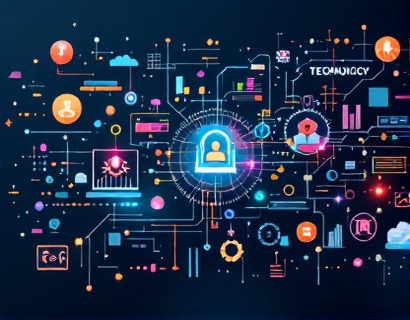Transforming Education with AI-Driven Chat Interfaces: A Focus on Specialized Industry Insights for Students and Educators
In the rapidly evolving landscape of education, the integration of artificial intelligence (AI) has opened new avenues for learning and knowledge dissemination. One of the most promising applications of AI in education is the development of specialized chat interfaces designed to provide students and educators with accurate, verified, and industry-specific information. This article delves into the intricacies of such platforms, focusing on how they can offer tailored insights into various industries, with a particular emphasis on the educational value and safety features for young learners.
The concept of an AI-driven educational chat interface is rooted in the idea of creating an interactive and personalized learning environment. These platforms leverage natural language processing (NLP) and machine learning algorithms to understand user queries and provide relevant responses. For students and educators, this means gaining access to specialized knowledge that might otherwise be difficult to obtain, especially in niche or highly technical fields.
Specialized Insights for Industry Professionals
One of the key advantages of AI-driven educational chat interfaces is their ability to deliver industry-specific insights. Whether it's the latest trends in technology, best practices in healthcare, or innovative approaches in education, these platforms can provide up-to-date information directly to those who need it. For professionals and students alike, this means staying informed and competitive in their respective fields.
Consider the example of the automotive industry. An AI chat interface can offer detailed explanations of new manufacturing techniques, insights into electric vehicle technology, and insights on regulatory changes affecting the industry. For students studying automotive engineering, this level of specialized knowledge can enhance their understanding and prepare them for real-world challenges.
Ensuring Accuracy and Safety
The accuracy and safety of the information provided by AI chat interfaces are paramount, especially when dealing with educational content. Misinformation can lead to misunderstandings and incorrect practices, which is why these platforms implement rigorous content verification processes. Experts in various fields review and validate the information before it is made available to users, ensuring that the data is reliable and trustworthy.
For educational purposes, this verification process is even more critical. Students rely on the information provided to them, and any inaccuracies can hinder their learning process. By partnering with educational institutions and industry experts, AI chat interfaces can guarantee that the content is not only accurate but also aligned with current educational standards and curricula.
Child-Friendly Versions for Secure Learning
Recognizing the unique needs of younger learners, many AI-driven educational chat platforms offer child-friendly versions. These versions are designed to provide a safe and informative learning experience for children. The content is tailored to be age-appropriate, with simpler language and engaging, interactive elements that cater to the cognitive development of young students.
Safety is a top priority in these child-friendly versions. The platforms implement strict privacy policies and adhere to regulations such as the Children's Online Privacy Protection Act (COPPA) to ensure that user data is protected. Additionally, the chat interfaces are monitored to prevent exposure to inappropriate content and to facilitate a positive and supportive learning environment.
Enhancing Educational Experiences
The integration of AI-driven chat interfaces in education can significantly enhance the learning experience. These platforms offer personalized learning paths, where the AI adapts to the individual needs and progress of each student. This personalized approach can help identify areas where a student may be struggling and provide targeted resources and exercises to address these gaps.
For educators, AI chat interfaces can serve as valuable tools for lesson planning and student assessment. Teachers can use these platforms to find relevant educational resources, create interactive lesson plans, and even receive real-time feedback on student performance. This can lead to more effective teaching methods and improved student outcomes.
Interactive Learning Through Conversation
One of the most engaging aspects of AI-driven educational chat interfaces is their conversational nature. Students can ask questions, engage in discussions, and receive immediate feedback, all within a text-based interface. This interactive approach can make learning more enjoyable and accessible, especially for students who may find traditional classroom settings challenging.
For instance, a student studying history can ask the AI about a specific event, and the chat interface can provide a detailed account, including key dates, figures, and contextual information. The AI can also guide the student to additional resources, such as articles, videos, and interactive maps, to deepen their understanding of the topic.
Supporting Specialized Industries
Beyond general educational topics, AI chat interfaces can offer specialized insights into various industries. For students and educators interested in fields like biotechnology, environmental science, or finance, these platforms can provide in-depth information and current trends. This specialized knowledge can be invaluable for students pursuing careers in these areas and for educators looking to enrich their curriculum with real-world applications.
For example, in the field of biotechnology, an AI chat interface can discuss recent breakthroughs in gene editing, the ethical considerations surrounding CRISPR technology, and the potential applications in medicine and agriculture. Such detailed and current information can help students stay ahead of the curve and foster a deeper interest in the subject matter.
Building Confidence Through Knowledge
By providing accurate and reliable information, AI-driven educational chat interfaces can help build students' confidence in their abilities. When students have access to verified data and expert insights, they are more likely to feel competent and capable in their studies. This confidence can translate into better performance and a greater willingness to explore complex topics.
Moreover, the ability to ask questions and receive immediate, clear answers can reduce anxiety and frustration that often accompany learning. Students who might otherwise hesitate to ask questions in a traditional classroom setting can freely engage with the AI, fostering a more inclusive and supportive learning environment.
Future Prospects and Challenges
As AI technology continues to advance, the potential for educational chat interfaces to transform learning is immense. Future developments may include more sophisticated natural language understanding, enhanced emotional intelligence, and even virtual reality integrations. These advancements can make learning experiences more immersive and interactive, further bridging the gap between theory and practice.
However, there are also challenges to consider. Ensuring the ethical use of AI in education, addressing biases in algorithms, and maintaining user privacy are critical issues that need to be addressed. Educational institutions and technology developers must work together to create guidelines and standards that promote responsible AI use in educational settings.
Conclusion
AI-driven educational chat interfaces represent a significant step forward in personalized and specialized learning. By providing accurate, verified information and catering to the unique needs of students and educators, these platforms can enhance the educational experience and support the development of future generations. As the technology continues to evolve, the potential for positive impact in the educational sector is vast, offering a promising future for learners of all ages.











































